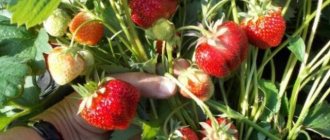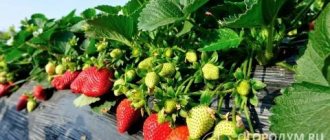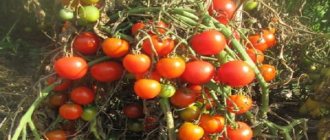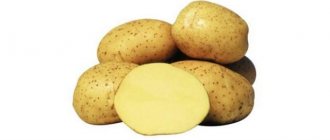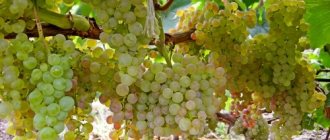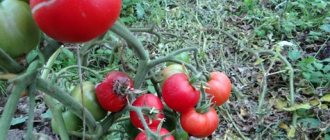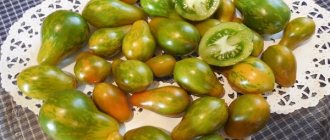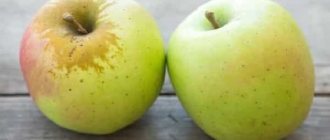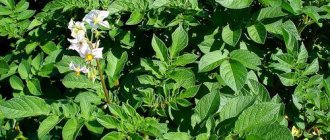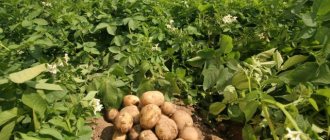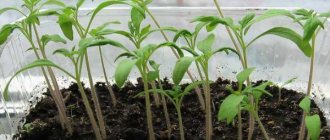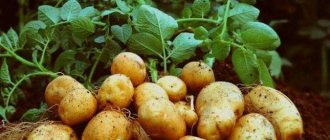History of variety development
The non-repairing strawberry variety Vityaz was bred by breeders from the Kokinsky stronghold of the All-Russian Selection and Technological Institute of Horticulture and Nursery Growing at the end of the last century.
The variety was obtained by crossing the Festival Chamomile and Surprise Olympics strawberries. The Vityaz strawberry was introduced for registration in the State Register of Russia in 1997, and a new variety was tested for a couple of years.
Festival Chamomile
Surprise at the Olympics
As a result, in 1999 it was included in the Russian State Register and recommended for cultivation in the following regions:
- Central;
- Srednevolzhsky;
- Volgo-Vyatka;
- North-West.
Garden strawberry 'Zenith'
Main type: Garden strawberry
| Fruit size |
| Fruit shape |
| Fruit color |
| Winter hardiness |
| Decoration of plants and fruits |
| Flower size |
| Brush characteristics |
| Berry/truss separation |
| Nut kernel size |
| Blush (cover color) |
| Fruit pulp color |
| Density and character of the pulp (fruit/bush/yag) |
| Fruit aroma |
| Frost resistance (fruit/bush/yag) |
| Drought resistance (fruit/bush/yag) |
| Beginning of fruiting after planting |
| Ripening period (fruit/bush/yar) |
| Consumer maturity |
| Productivity (fruit/bush/yag) |
| Fruit shedding |
| Remontant |
| Self-pollinating/self-fertile |
| Purpose of fruits (fruit/bush/yag) |
| Taste of fruits (fruit/bush/yag) |
| Soil pH requirements (fruit/bush/yag) |
| Shelter for the winter (fruit/bush/yag) |
| Soil type (fruit/bush/yar) |
| Disease resistance (fruit/bush/yag) |
| Resistance to pests (fruit/bush/yag) |
| Habitus (fruit/bush/yag) |
| Growth form |
| Crown density |
| Thorns, thorns |
| Vitamin content (fruit/bush/yag) |
| Keeping quality of fruits (fruit/bush/yag) |
| Cultivation region by origin (fruit/bush/yar) |
Expand all properties
Description of the plant:
Garden strawberry 'Zenith' is a variety obtained at the All-Russian Selection and Technological Institute of Horticulture and Nursery Growing by the author I.V. Popova. The parents of the plant are the varieties 'Zenga Zengana' and 'Red Coat'.
At state variety testing since 1979. Included in the state register in 1987 for the Central (Moscow region), Volga-Vyatka (Udmurt Republic) and Middle Volga (Republic of Mordovia) regions.
Dimensions and growth form:
The bush is medium-sized, compact. Peduncles are short, of medium thickness, located below the level of the leaves.
Flowers and fruits:
The inflorescences of garden strawberry 'Zenith' are compact, few-flowered. The berries are large in size, average weight 12 g, round in shape, slightly ribbed, and have a small neck.
The skin is dark red and shiny. The achenes are slightly pressed into the pulp. The pulp is dense, dark red in color, and tastes sweet and sour. Application - universal.
Precocity, ripening time, yield:
Medium ripening variety. Characterized by high productivity.
Disease resistance:
The 'Zenith' variety is relatively disease resistant.
Main characteristics
This strawberry variety is distinguished by its average harvest ripening time - ripe strawberries begin to be harvested at the end of June. The size of the bushes is medium, they are semi-spreading, with an average amount of foliage. The bushes are quite compact, round in shape.
The number of tendrils formed is in medium quantities. The foliage is slightly concave inward, slightly bubbly, the base is blunt, the ends are sharp, and there are large jagged edges. The color of the leaf blades is bright emerald.
Peduncles are medium in size, grow to the level of foliage, each can form up to 6-9 buds. The flowers are medium in size, the inflorescences are compact in size, the color of the petals is white. Each bush can produce up to 8-10 flower stalks.
The first berries of this strawberry are large (up to 30 g), subsequent fruits become smaller and can weigh 20 g or less. Their shape is conical, almost oval. The color of the skin is bright red, there are many achenes, they are colored yellow, slightly pressed into the skin. The pulp is rich red in color with an orange tint, compacted, and has a characteristic strawberry smell.
Appearance of bushes and berries
Strawberries Vityaz conical shape. The size is larger in width than in length. The surface of the berries is uniformly red and has pressed seeds on it. The weight of the berries can range from 10 to 40 g, but in most cases the strawberries grow large. Bushes of the Vityaz variety are slightly spreading, their shape resembles a semicircle. The leaves on them are green, not too bubbly, slightly concave. The bushes of this variety have a small number of whiskers. The flowers are placed no higher than the level of the leaves, since the peduncles are short. The Vityaz strawberry inflorescences grow quite compact. The flowers are small, their outer calyx is smaller than the inner one.
Description of the variety
The taste of ripe berries is reminiscent of strawberries - sweet and sour, and the acid content in the fruit is slightly increased - up to 1.2%, which is higher than that of other strawberry varieties. Therefore, not everyone likes the harvest from Vityaz strawberries. As a result, this strawberry variety is gradually losing its popularity among gardeners.
Strawberries tolerate transportation well over short distances, but do not withstand long trips and long-term storage; juice is released, the presentation is lost and the taste deteriorates. Ripe fruits can be eaten fresh, used for making desserts, made into jam or preserves, and also stored in the freezer for the winter.
The marketability of ripe berries is not bad, so many summer residents grow Vityaz strawberries for further sale. But for industrial purposes, it is recommended to plant more promising varieties, since in comparison with them the fruits of Vityaz look modest, and the yield of the variety is not the highest.
But this variety is valuable for its following qualities: high resistance to most diseases, attacks by insect pests, perfectly adapts to any growing conditions, is winter-hardy, tolerates cold well, as well as periods of drought. These latter qualities make it possible to grow Vityaz strawberries throughout almost the entire territory of Russia.
Garden strawberry 'Vityaz'
Are you here
Strawberries are propagated vegetatively, mainly by seedlings (rooted rosettes on bushes).
The developed rosette is fed by the mother bush before rooting. The better developed the plants, the more tendrils and rosettes they form. The largest, well-developed rosettes are formed on the tendrils of annual and biennial plants. In home garden conditions, seedlings can be grown directly on a commercial plot, using one- and two-year-old plants. The main condition for this is the establishment of healthy plantings. Planting material is best purchased from specialized farms. The survival rate, further growth and development of plants depend on the quality of seedlings.
Propagation of strawberries from fruiting bushes reduces the yield by 20–30%, and when kept near the mother bush, by 50%. Therefore, to grow pure-grade seedlings, it is advisable to plant a special mother plant on well-fertilized soil. Mother plants are planted according to a pattern of 80 by 40 cm. The emerging tendrils are laid out between rows and pinned to the ground, or in special seedling pots buried in the ground.
Before planting the rosettes and immediately after, water the soil. In the future, monitor the humidity, especially in the first week after planting. Optimal humidity and temperature conditions can be achieved by covering the ridges with a film, preferably perforated, since the likelihood of overheating under it is reduced. On hot days, the film cover is slightly opened or the ridges are shaded.
Propagation of garden strawberries by seeds. More and more often in seed stores you can find seeds of garden strawberries of new, promising varieties. But growing an adult, well-bearing plant from seeds is quite problematic. I tried to summarize the accumulated experience on this issue.
Preparing the land for planting garden strawberry seeds. A lot depends on how the land is prepared, so this stage must be approached responsibly. We can recommend the following composition: turf soil 50%, peat 25%, sand 25%, and you should also add wood ash and rotted manure (manure can be replaced with a complete complex mineral fertilizer).
The prepared soil is steamed for 30 minutes at a temperature of about 150°C. During this time, all microorganisms die, including weed seeds. Small volumes of earth can be steamed in the oven over an open fire. (Thus, you should prepare the ground for planting any small and difficult-to-germinate seeds). After the earth has cooled, planting begins.
Landing. Strawberry seeds are planted at the end of February
I pour the prepared soil into a suitable box with a layer of at least 5 cm, lightly compact it and lay small strawberry seeds on the surface, lightly sprinkle them with soil and carefully water them (it is better to spray the surface of the soil with a sprayer). The box is covered with glass or plastic film so that the top layer of soil does not dry out.
The next mandatory stage is seed stratification, i.e. treating them with cold. To do this, the planting box is transferred to a cold place with a temperature of about 0°C and kept there for at least 3 to 4 weeks. A small box can be placed in the refrigerator or buried in the snow. If stratification is not done, then the seeds either will not sprout at all, or the sprouts will be very uneven and frail.
The work doesn't end there. The fact is that when propagated by seeds, the “children” do not repeat the characteristics of the “parents” and even if we assume that the seeds were taken from high-yielding, varietal plants, it is not a fact that the plants we grow will also be high-yielding. Therefore, next year it is necessary to carefully monitor the flowering and fruiting of plants and select only the best specimens in terms of yield and varietal characteristics, and destroy all the rest. Subsequently, during vegetative propagation, i.e. by rosettes, varietal characteristics are passed on from generation to generation without changes.
Productivity
Unfortunately, ripening strawberries of this variety have different sizes: the first fruits are large, but subsequent berries become smaller up to 10-15 g. Although during testing, up to 110-125 centners of ripe products were collected from each hectare of this strawberry plantation, but this yield is considered average for strawberry varieties.
From each square in personal farmsteads you can collect about 2.4-2.9 kg of ripe berries, and from one bush you can collect no more than 0.4 kg of products. Compared to some other strawberry varieties, when more than 1 kg of ripe fruit is harvested from one plant, Vityaz’s yield looks more than modest.
The real Knight of the strawberry field
We will tell you in more detail and a little more convincingly - what kind of miracle with the beautiful name of the Russian selection is, is it worth breeding on the plot, what should a gardener expect, should a farmer test it - biological characteristics, descriptions, assessment of economic value.
Description of the Vityaz variety: the name matches
Characteristics, main features, brief and succinct pomological features. Based on the test results, from the words of farmers and summer residents - briefly and to the point: what to expect from Vityaz.
Mid-early fruiting period, universal purpose. Based on the totality of economically valuable traits, it is introduced into the main assortment of Russian selection. According to an assessment of the resistance of varieties to diseases and pests, it was identified as highly resistant to strawberry mites and fungal diseases of leaves.
Received in VSTISP at the Kokinsky stronghold, parents Festival Romashka x Surprise Olympics. Included in the State Register of Breeding Achievements of the Russian Federation for the Central Region (3).
It is used in homestead farming and complements the assortment of farms in the mid-early segment.
Chemical composition: sugar 9%, acidity above average 1.2%, vitamin C 60 mg%.
Productivity is 2.5-3 kg/m2, according to other estimates 14.6 t/ha (2002), and also about 103 c/ha. According to the Kokinsky strong point, according to the results of 2006-2007 - 350-400 g, respectively, industrial 18.3 - 26.6 t/ha). Average 380 g/plant or 22.5 t/ha.
Among its analogues, it stands out for its high resistance to strawberry mite; according to the author, Aitzhanova S.D., its resistance to extreme conditions and winter hardiness.
Biological features
Briefly - a description from the words of the originator, supported by the opinion of gardeners and farmers.
- The bush is medium-sized, the habit is semi-spreading, flat-round, of medium density.
- The leaves are bright green, slightly concave, slightly vesicular.
- Barn formation is average - the reproduction rate is moderate. If desired, it reproduces well, especially when the queen cell is kept separately. To do this, it is worth dividing the fruit-bearing beds, and a separate mother plantation, where fruiting is not allowed, breaking out the flower stalks.
- Peduncles are short, multi-flowered, located at the level of the leaves, 7-9 pcs. per plant and more. Inflorescences are compact.
- Fruits weigh on average 15-25 g (according to other sources up to 9 g), the first ones up to 30 g, rounded-slightly conical, yellow achenes, medium-sized, slightly recessed. The skin is bright red, with a pleasant shine. The zone near the calyx without achenes is narrow, evenly colored. The pulp is red-orange, sweet with appropriate sourness, sugary, fragrant. Gardeners note the excellent presentation - very beautiful, regular, one-dimensional, as well as transportability and density - does not wrinkle during transportation, does not leak.
Resistance to verticellosis, powdery mildew, spots of all colors, mites, other diseases and pests is above average. Winter hardiness is good.
It is used in central Russia as a medium, early fruiting variety under cover - film, arcs, arches, and the Vityaz strawberry has reviews as a somewhat sour, but very tasty variety, suitable for a summer cottage, garden. And there’s nothing for sale - it’s productive and unpretentious. And, most importantly, it is winter-hardy; in thaws, with a small amount of snow, no or very few falls are observed. It does not require aggressive preventative treatments against pests and diseases, except that in areas with very low agricultural background it will prove to be painful, and even then in critical years. You can’t call it a taster’s dream—perhaps it will be inferior in some way to French desserts or Russian-selected diamonds. But you can’t call it tasteless, bland or tasteless either. According to reviews, it is bright with a noticeable sourness, very appropriate in preserves, jams, and good for hunting
And so that the sugar content does not drop, it is worth paying attention to mineral fertilizing during flowering - potassium helps. It will gain both density and sugar content if you add a sufficiently balanced mineral complex during flowering, ovary and fruit formation
And then the Knight will reveal his best traits, to the delight of his owners, as a reward for his efforts and the warmth of his hands. Happy harvest!
Advantages and disadvantages
The main advantages of this variety of strawberries include:
- good presentation and taste of ripe strawberries;
- high resistance to diseases and pests;
- good drought and frost resistance;
- remarkable adaptation to any growing conditions;
- versatility of purpose of the harvested crop.
However, the variety also has obvious disadvantages:
- fruits do not tolerate transportation over long distances and are not stored for long;
- instability of fruiting;
- not everyone likes the sour taste of berries;
- the yield is not too high.
Pros and cons of berries
Beardless strawberries have advantages and disadvantages. They are called remontant strawberries, a designation for the ability of a crop to bear fruit more than once annually. Remontant strawberries lay fruit buds during daylight hours of any length. The only condition is to ensure a light period for laying of at least 6 hours.
The main advantages of bare strawberries:
- high yield;
- minimum requirements for conditions for growth and fruiting;
- taste qualities of berries;
- wide selection of varieties;
- limited planting space.
Among the disadvantages are the need for frequent planting, as well as difficulties in carrying out propagation in order to preserve a certain variety.
Landing
Since the variety is undemanding to growing conditions and does not require special care, it is therefore often called “strawberry for lazy people.” But still, certain conditions exist for choosing a place to plant Vityaz strawberries. The site should not be even in light partial shade, and should be protected from drafts and cold winds. The soil should be fairly loose and fertile, with a slightly acidic or neutral pH.
It is better to prepare the beds in the fall by adding humus, compost or rotted mullein to the soil. During autumn digging, lime is added to acidified soils, and peat and river sand are added to highly alkaline soils.
The main thing when choosing a site is to ensure that moisture does not stagnate in the soil, so you should not make beds for strawberries in lowlands or in places where groundwater comes too close to the soil surface.
When planting, the distance between the bushes should be at least 0.35-0.4 m, and the row spacing should be up to 0.6 m. Typically, strawberries are planted in 2 rows on the beds - this makes it easier to care for them in the future and easier to harvest.
How to plant strawberries on the plot
Vityaz strawberries cannot be planted in a bed where onions, parsley, carrots, and tulips were previously grown.
See also
Terms and rules for fertilizing strawberries, what is better to fertilize for a good harvest
Read
Selection and preparation of beds
The area for planting strawberries should be in the brightest place. The variety can grow on any soil, but the best soil is loamy, which has a neutral reaction. The soil must be loose to allow air to pass through well.
Preparing the seedlings
Long before planting the seedlings, complex fertilizers, possibly potash, should be applied to the garden bed. Before planting, seedlings are cleared of dried leaves and the root system is inspected. After this, you need to dip the strawberry roots in a weak solution of potassium permanganate. After 10 minutes of soaking, the seedlings are removed and the roots are washed in running water.
Timing and technology of planting seedlings
Planting of seedlings is carried out in May in pre-prepared holes. When planting, it is important not to deepen the growing point. The top bud should be located at soil level. Planting is carried out in cloudy weather or in the evening. The bushes need to be watered generously and the soil moisture monitored until the strawberries begin to grow.
The Vityaz variety produces few whiskers. That's the only problem. To increase planting, you should set aside a separate bed for planting. When growing mother bushes separately from fruit-bearing plants, they should not be allowed to bloom and set fruit. All flower stalks must be removed in time. This way you can get more planting material.
Care
Although Vityaz strawberries are highly resistant to drought, regular watering has a beneficial effect on the taste of ripening berries. You will also have to loosen the soil and remove weeds. But, in general, this strawberry variety belongs to the category of “plant and forget” plants.
It is also recommended to renew this strawberry plantation every 4-5 seasons, since by this time the Vityaz strawberry begins to reduce its yield, so the plants need to be replaced.
We organize the care of berry bushes
Despite the fact that the Vityaz strawberry variety is considered unpretentious, it is necessary to know and follow agrotechnical methods of cultivation and care in order not to lose the harvest and increase fruiting.
How often to water
When the earthen clod dries out, the yield decreases. The Knight loves moisture. It is necessary to water as the earthen clod dries out. Watering should be regular. Particular attention should be paid to soil moisture in spring and autumn, otherwise there will be no harvest.
How to feed the plant
Strawberries need to be fed with organic and mineral fertilizers. Before planting, superphosphate and organic matter must be added to the hole. During the growing season, strawberries are fed twice. Complex fertilizers are applied at the root, and biological products are used as foliar feeding. In the spring, you need to spray the plantings with urea, which stimulates the active growth of the bushes.
Weeding and loosening the soil
To ensure good air exchange, it is recommended to regularly loosen the soil around the plants and remove weeds so that they do not choke the berry crop and take all the beneficial substances from the soil.
See also
Description and characteristics of strawberries of the Asia variety, planting technology and care
Read
Mulching
To maintain soil moisture and to prevent the growth of weeds, strawberry plantations should be mulched. Dry grass, sawdust, and peat can be used as mulch.
Shelter for the winter
Green foliage remains on the bushes until winter. Then the above-ground part dies off. If you do not cover the plantings, the root system may freeze when the temperature drops below -8°C. If a good shelter is provided, the berry crop can successfully survive 35-degree frosts.
Preventive treatments against diseases and pests
As a disease prevention measure, it is recommended to thin out the plantings in time to prevent thickening, since with high humidity and density of the bushes, rot can develop. The fruits will begin to rot and will be unfit for consumption.
Apple tree ripening and fruiting
Another important characteristic of any apple variety is the period of ripening and fruiting of the tree.
Pollinator varieties
The Auxis apple tree is a self-sterile hybrid, so it will not be possible to get a harvest without being adjacent to other apple trees. Pollinator varieties include:
- Knight;
- Antonovka;
- Renet Semerenko;
- Antey;
- Scarlet anise.
To increase pollination, it is recommended to plant 3-4 varieties of apple trees nearby.
Flowering and fruit ripening
The flowering period of the plant occurs in mid-May. Apple ripening begins in the last ten days of September and often continues until the middle of the next month.
Reviews
Olga, 46 years old, Moscow region : planted Vityaz strawberries several seasons ago. I can say that this strawberry took root well, grew well, did not freeze in winter, and did not get sick during the summer (unlike other varieties of strawberries). Although the ripening berries of this strawberry are of uneven size, the harvested harvest is enough for my family to eat fresh, for jam, and for storing in the freezer.
Natalya, 55 years old, Pskov region : Vityaz planted strawberries for testing three seasons ago. I can say that the main advantage of the variety is its unpretentiousness and low maintenance requirements. You don’t have to water the bushes of this variety for a long time and forget about fertilizing, but the plants will still produce a harvest. Of course, if you regularly apply fertilizers and water strawberries, the yield will be higher, and the size of the berries will be larger. I can say that during all this time the bushes of this variety have never been affected by fungal diseases, so there was no need to carry out preventive treatments.
Regions of growth
“Vityazi” is popular in Russia. Due to its ability to tolerate temperate climates, this variety is planted mainly in non-chernozem regions of the country.
This variety is not suitable for the northern regions, since, with a short summer, the crop does not have time to ripen.
The Vityaz apple variety provides gardeners with fruit throughout the winter. Therefore, garden owners grow several of these apple trees on their territory at the same time. Firstly, it's a good income. Secondly, it's simply delicious and healthy.
What type does it belong to?
Vityaz is considered a late winter variety .
Its peculiarity is that the standing fruit only reaches technical maturity; it is harvested at the end of September, beginning of October. The full flavor develops after the apples have been sitting for several months.
Under the right conditions and temperature conditions (freeze-free cellar, refrigerator), the harvest of Vityaz varietal apples lasts until May.
Reproduction
Vityaz produces little mustache, but it is quite possible to propagate the variety this way. To obtain a larger amount of planting material, a separate bed is allocated. Peduncles are plucked from the bushes during the season. During the rooting process, the rosettes are watered more often, preventing them from drying out. In order for young plants to take root better, they are slightly “sunk” into the ground and secured with a hairpin.
You can use the method of dividing the bush. Choose powerful plants consisting of several rosettes. They are dug up and divided into parts with a sharp knife. If you perform this procedure in early spring, you can get the first harvest already in the current season.
The apple tree of the Vityaz variety grows not upward, but in breadth
Due to its massiveness and wide spreading crown, it has not become a favorite of owners of small garden plots.
A solitary growing tree resembles a powerful low-growing oak , which is why it got its name Vityaz.
This apple variety is the brainchild of one of Michurin’s most talented students, Sergei Ivanovich Isaev , who dedicated his life to breeding frost-resistant apple trees .
Pollination
Experienced gardeners know that it is not advisable to grow just one variety of apple in a garden. The key to a good harvest is cross-pollination of different varietal trees (not close relatives!), which usually bloom profusely in late April - early May , but ripen at different times.
The structure of the apple tree flower of the Vityaz variety is special; the anther (part of the stamen with pollen) is located directly above the pistil, which ensures that pollen spontaneously falls on them, that is, the tree pollinates itself.
Diseases and pests
The Vityaz variety is resistant to scab. But no one has canceled spring spraying before flowering. If you notice spots on young leaves that gradually turn into a brown coating, carry out another treatment.
Among the common diseases is powdery mildew (fungus). It covers the trunk and leaves with a coating (as if they had sprinkled flour).
Spraying is required, for which soapy water and a colloidal sulfur solution (two percent!) are recommended.
If the leaves of a young tree turn yellow, the soil may be waterlogged and drainage is required.
Do you notice curled leaves on an apple tree with a caterpillar living inside them?
Know that this is how the apple moth .
Damaged leaves should be collected and burned. Pests such as sapwood, hawthorn, silkworms, and codling moth can cause no less harm. Preventive measures must be taken against them.
The Vityaz apple variety has proven itself to be high-yielding and frost-resistant . Large fruits cannot be removed from the branch and eaten immediately; they must lie down. And this is rather their advantage.
They develop their taste by December. Given their high fertility, apples will delight you until the end of spring. The fruits tolerate transportation well and have an excellent appearance.
There is one minus, the giant apple tree requires a large area, which not every gardener can afford.
If you find an error, please select a piece of text and press Ctrl+Enter.
